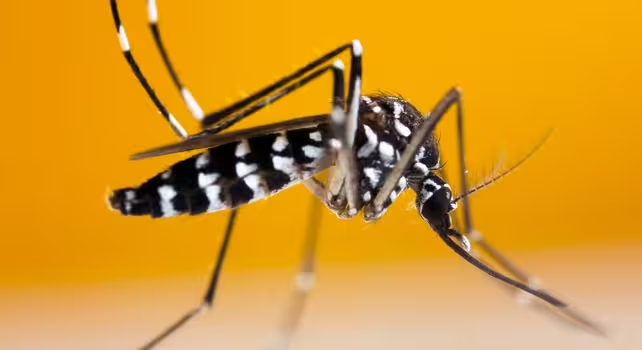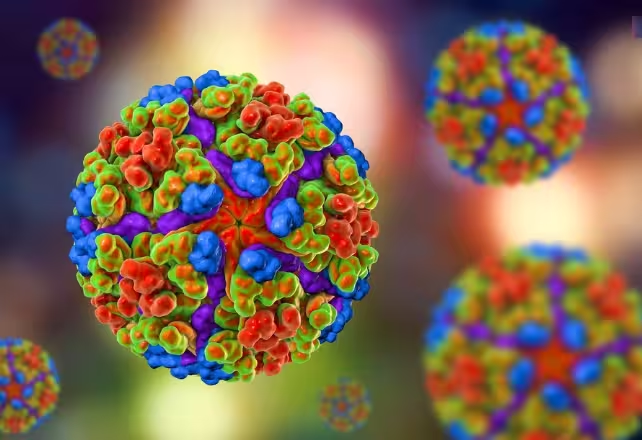4 Minutes
What Is Chikungunya? Scientific Context and Global Spread
Chikungunya is a mosquito-borne viral disease that has seen a surge of cases in southern China, notably in Guangdong province. First identified in Africa, chikungunya has since spread to parts of Asia and the Americas, with outbreaks linked to the expansion of mosquito habitats due to climate and environmental changes. The virus is primarily transmitted to humans by the Aedes aegypti and Aedes albopictus mosquitoes, which are also vectors for diseases like dengue and Zika.
Symptoms of chikungunya typically begin four to seven days after a mosquito bite and can include sudden high fever and severe joint pain, often described as debilitating. Other frequent signs are headache, muscle pain, rash, and fatigue. While chikungunya is generally not fatal, joint discomfort can persist for weeks or even months in some cases, impacting patient quality of life. These symptoms overlap significantly with those of other arboviral infections (arbovirus is a scientific term for viruses transmitted by arthropods such as mosquitoes), complicating diagnosis and outbreak surveillance.
Chikungunya Cases on the Rise in Southern China
Recent weeks have seen over 7,700 cases of chikungunya reported in Guangdong province, marking a significant increase in viral transmission. The city of Foshan has been hardest hit, with more than 2,700 individuals affected in just one week according to the Provincial Disease Control Office. The neighboring metropolitan area of Guangzhou has also reported dozens of infections, and Hong Kong has confirmed its first incident related to this outbreak.
Leading health expert Kang Min stated that, "The rapid escalation of cases has been preliminarily contained," based on current intervention measures. However, Kang also cautioned about ongoing risks due to geographic factors — including the region's status as a global trade hub and seasonal weather patterns like rain and typhoons that can increase mosquito breeding opportunities. Such environmental conditions underscore the challenge of controlling vector-borne diseases in densely populated and highly connected regions.

Measures to Control the Outbreak: Disease Prevention in Action
Authorities in Guangdong have launched comprehensive control strategies to suppress the spread of chikungunya. Measures include public awareness campaigns on eliminating mosquito breeding grounds, such as removing standing water in containers, unblocking drains, and clearing outdoor spaces. State media coverage has shown hospitals in Foshan treating patients in mosquito net-enclosed wards, highlighting the intensive response underway.
Teams equipped with protective gear are conducting widespread insecticide spraying in parks, vacant lots, and around residential buildings. Law enforcement has supported these efforts by imposing fines of up to 1,000 yuan (~$140 USD) on businesses failing to prevent mosquito proliferation. In some districts, more coercive actions such as mandated hospitalizations and the inspection of private homes for water sources have been reported. In extreme cases, local authorities have even temporarily cut power to residences not complying with disease prevention directives.
While these interventions are decisive, they have sparked debate about measures versus personal autonomy. The strong public health response aims to arrest the outbreak's momentum before it can escalate further—especially given southern China's role as a major business and travel nexus.
How Does Chikungunya Compare to Other Infectious Diseases?
Unlike human-to-human respiratory pathogens such as SARS-CoV-2 (which causes Covid-19), chikungunya requires mosquito vectors to spread, making direct transmission from patient to patient essentially impossible. Moreover, fatalities are extremely rare, with most cases resolving with supportive care—often acetaminophen or paracetamol to reduce pain and fever.
There is currently no globally available, widely deployed vaccine for chikungunya, though two vaccines have been approved in some regions outside China. Vaccine development continues to be a public health priority for at-risk countries to provide broader community protection in the future.
International agencies, including the World Health Organization (WHO), have not issued special alerts or travel advisories specific to China's outbreak. However, the United States has advised travelers exercise caution if visiting affected locations. Chinese health officials emphasize that, while the outbreak requires vigilance, chikungunya is "preventable, controllable, and treatable" with existing public health tools.

Conclusion
The chikungunya outbreak in southern China highlights the persistent global threat posed by mosquito-borne viruses and the complexities of disease prevention in highly populated and mobile regions. While the risk of a pandemic remains low due to its mode of transmission, chikungunya underscores the need for robust vector control strategies, community engagement, and continued research into vaccines and diagnostics. As authorities in China mobilize a comprehensive response, the situation serves as a critical reminder of the importance of coordinated action and scientific vigilance in managing emerging infectious diseases.
Source: sciencealert



Comments